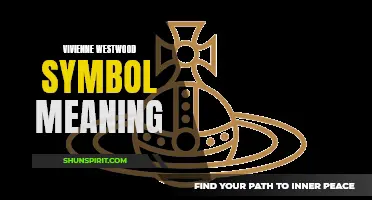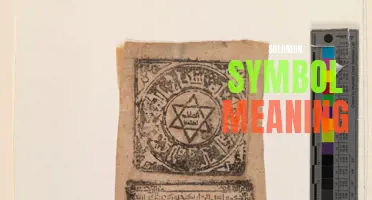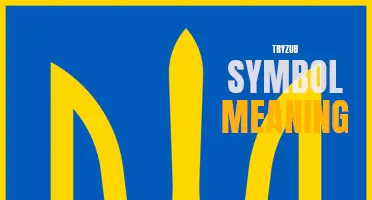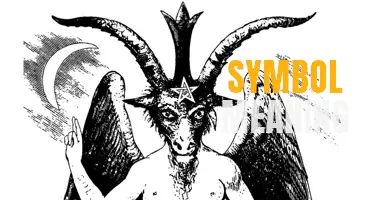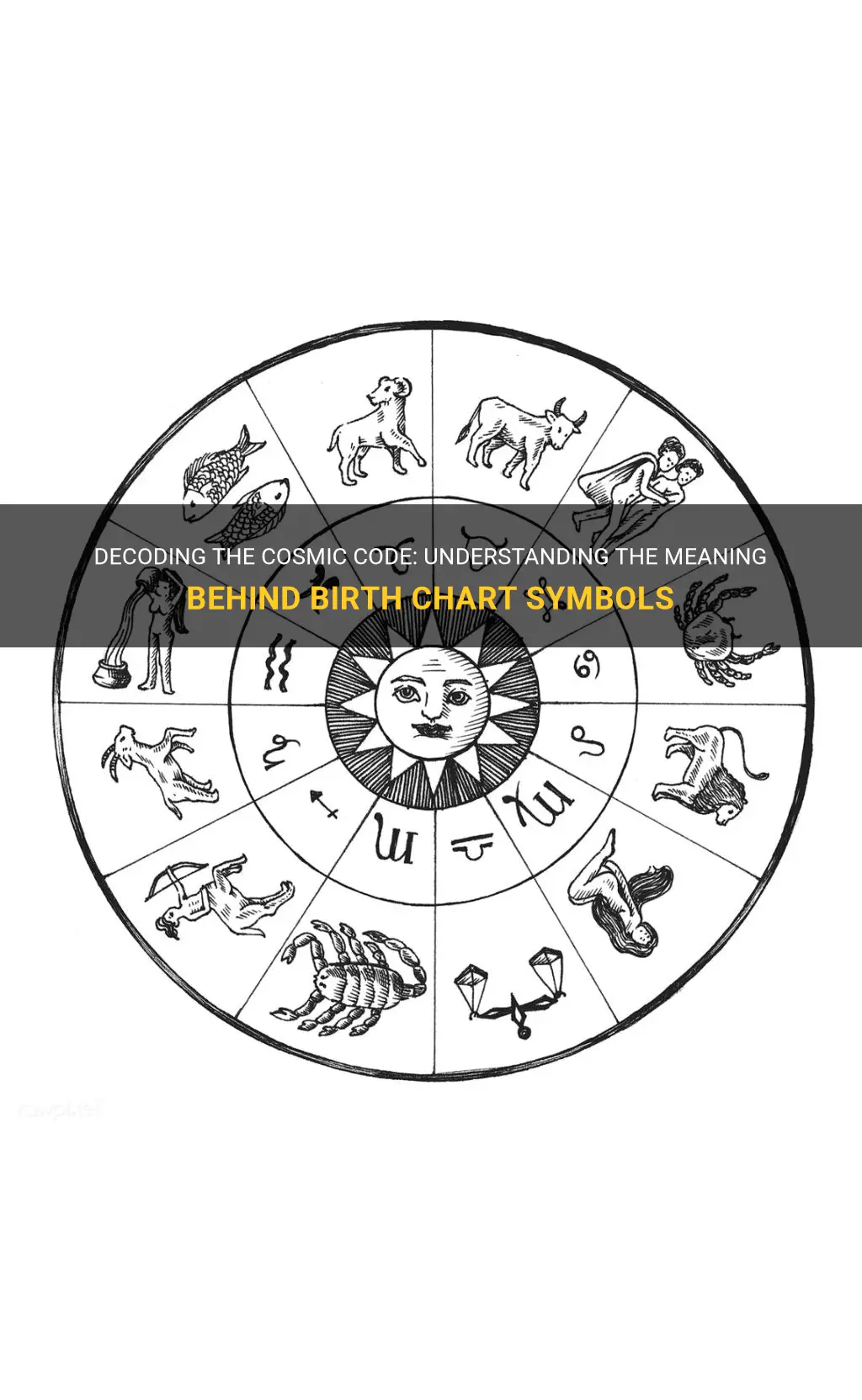
Did you know that every person's birth chart is like a unique fingerprint that holds the secrets to their personality and life's journey? Within the birth chart, there are various symbols and celestial bodies that each carry their own unique meanings and influence on an individual's life. From the zodiac signs to the placement of planets and asteroids, deciphering these birth chart symbols can provide deep insights into one's strengths, weaknesses, and purpose in the world. So buckle up and get ready to dive into the mysterious and fascinating world of birth chart symbols meaning.
What You'll Learn
- What do the different symbols in a birth chart represent?
- How do astrologers interpret birth chart symbols to determine personality traits?
- Are birth chart symbols consistent across different astrological traditions?
- Can birth chart symbols change or evolve over time?
- Is there a standard reference guide for interpreting birth chart symbols?

What do the different symbols in a birth chart represent?
In astrology, a birth chart, also known as a natal chart, is a map of the positions of the planets and other celestial objects at the exact moment of a person's birth. It is believed to offer insights into a person's personality traits, strengths, weaknesses, and life experiences. The birth chart is divided into twelve houses, each representing a different area of life, and is filled with various symbols that hold specific meanings. Let's dive into what these symbols represent.
Astrological symbols are glyphs that represent the different celestial objects in a birth chart. Here are some of the most common symbols you will encounter:
- The Sun: The Sun symbol represents the core essence of an individual's personality. It signifies their ego, identity, and drive for self-expression. The Sun is associated with vitality, creativity, and leadership qualities.
- The Moon: The Moon symbolizes emotions, instincts, and the subconscious mind. It represents a person's inner world, their emotional needs, and how they nurture themselves and others. The Moon is associated with intuition, sensitivity, and the motherly archetype.
- The Ascendant (Rising Sign): The Ascendant is the zodiac sign that was rising on the eastern horizon at the time of birth. It represents the individual's outward behavior, physical appearance, and first impressions. The Ascendant is often considered the mask we wear when interacting with the world.
- Planets: The planets in a birth chart each have their own unique symbolism and energy. They represent different aspects of life and personality traits. For example, Mercury represents communication and intellect, Venus represents love and relationships, and Mars represents passion and aggression.
- Houses: The birth chart is divided into twelve houses, each representing a different area of life. The houses provide information about specific areas of focus and the potential experiences related to them. For example, the first house represents the individual's personal identity and physical appearance, while the seventh house pertains to partnerships and relationships.
- Aspects: Aspects are the angular relationships between planets and other points in the birth chart. They indicate how the different energies interact and influence each other. For example, a conjunction occurs when two planets are in close proximity to each other, intensifying their combined effects.
- Midheaven (MC) and Imum Coeli (IC): The Midheaven represents one's career, reputation, and public image, while the Imum Coeli represents one's upbringing, roots, and private life.
Understanding the symbols in a birth chart can provide a deeper understanding of oneself and others. It is essential to consider the interactions and relationships between these symbols to develop a holistic interpretation of a person's astrological profile. Consulting with an experienced astrologer or using online resources can help in decoding the meanings of these symbols and unraveling the complexities of a birth chart.
Unlocking the Power of Symbols: Exploring the Meanings Behind Symbols that Represent Change
You may want to see also

How do astrologers interpret birth chart symbols to determine personality traits?
Astrologers believe that the positions and configurations of celestial bodies at the time of a person's birth can offer insights into their personality traits and tendencies. By analyzing a birth chart, which is a symbolic representation of the position of planets, sun, moon, and other elements of the zodiac at the time of birth, astrologers interpret the individual's character traits and potential.
To understand how astrologers interpret birth chart symbols to determine personality traits, it's important to first understand the basic components of a birth chart. The birth chart is divided into twelve houses, each representing different aspects of life such as love, career, and health. Within these houses, planets and other celestial bodies are placed in specific zodiac signs, which further affects their influence on the individual.
Astrologers pay particular attention to the placements of the sun, moon, and rising sign (also known as the ascendant) in the birth chart. The sun sign represents the core essence of an individual's personality and is determined by the position of the sun at the time of birth. It reflects one's outward expression and fundamental character traits. The moon sign represents emotions, instincts, and inner desires, and is determined by the position of the moon at the time of birth. The rising sign, on the other hand, represents the individual's outward behavior and how they come across to others.
In addition to the sun, moon, and rising signs, astrologers also analyze the placements of other planets in the birth chart. Each planet represents different aspects of an individual's personality. For example, Venus is often associated with love and relationships, Mars represents energy and action, and Mercury symbolizes communication and intellect. By examining the positions of these planets in relation to the houses they reside in, astrologers can gain insights into specific areas of an individual's life and personality.
The interpretation of birth chart symbols involves considering the aspects and relationships between planets. Planets can form aspects such as conjunctions (when two celestial bodies are in close proximity to each other) or oppositions (when two celestial bodies are directly across from each other). These aspects can indicate tension or harmonious energy between different elements of the individual's personality.
Astrologers also consider the elemental qualities of the zodiac signs when interpreting birth chart symbols. There are four elements in astrology: fire, earth, air, and water. Each element represents different characteristics and energies. For example, fire signs are often associated with passion and boldness, while earth signs are known for their practicality and grounded nature. By assessing the distribution of these elements in a birth chart, astrologers can better understand the individual's overall temperament and tendencies.
Ultimately, the interpretation of birth chart symbols is a complex process that requires a deep understanding of astrology principles and symbolism. Astrologers combine their knowledge of the zodiac signs, planets, houses, and aspects to form a comprehensive understanding of an individual's personality traits and potential. While birth chart interpretations can offer valuable insights, it's important to remember that they are not fixed or definitive predictions but rather tools for self-reflection and personal growth.
Cracking the Code: Exploring the Hidden Meanings Behind MTG Symbols
You may want to see also

Are birth chart symbols consistent across different astrological traditions?
When it comes to astrology, birth charts play a crucial role in understanding a person's unique personality traits, life path, and future possibilities. Birth charts, also known as natal charts, are a snapshot of the alignment of the planets at the exact moment of an individual's birth. These charts are commonly used in Western astrology, although similar concepts exist in other astrological traditions.
Despite the variations in astrological traditions across different cultures, birth chart symbols generally remain consistent. While there may be some differences in terminology or emphasis, the fundamental principles behind the birth chart symbols remain intact. Let's explore how birth chart symbols are consistent across different astrological traditions.
Western Astrology: The widely recognized birth chart system in the Western world is based on dividing the celestial sphere into twelve equal parts or houses, each representing a different area of life. The zodiac signs, consisting of Aries, Taurus, Gemini, Cancer, Leo, Virgo, Libra, Scorpio, Sagittarius, Capricorn, Aquarius, and Pisces, are placed within these houses based on the precise positions of the planets at the time of birth. The symbols for individual planets, such as the Sun (☉), Moon (☽), Mercury (☿), Venus (♀), Mars (♂), Jupiter (♃), Saturn (♄), Uranus (♅), Neptune (♆), and Pluto (♇), are also consistent in their representation across Western astrological charts.
Vedic Astrology: Vedic astrology, also known as Jyotish, is the traditional astrological system of India. While Vedic astrology uses a different zodiac system, known as the sidereal zodiac, the symbols for planets remain largely consistent with Western astrology. Additionally, Vedic astrology also assigns significance to specific lunar mansions, or nakshatras, which correlate with the positioning of the Moon at the time of birth. Although the symbols for these nakshatras may differ from Western astrology, the overall concept of incorporating the Moon's placement in the birth chart remains consistent.
Chinese Astrology: Chinese astrology, on the other hand, uses a different approach to birth charts. Instead of focusing on the positions of the planets, Chinese astrology primarily emphasizes the lunar calendar and the interactions between the five elements (wood, fire, earth, metal, and water) and the twelve animal zodiac signs (rat, ox, tiger, rabbit, dragon, snake, horse, sheep, monkey, rooster, dog, and pig). While there may not be direct correlations between the birth chart symbols in Chinese astrology and those in Western or Vedic astrology, the underlying principle of using astrological symbols to represent specific traits and influences remains consistent.
In conclusion, while there may be variations in terminology, zodiac systems, or emphasis, birth chart symbols remain fairly consistent across different astrological traditions. Whether it is Western astrology, Vedic astrology, or Chinese astrology, the symbols for planets, zodiac signs, and other significant celestial bodies have a similar representation and carry universal meanings. These symbols are essential tools for astrologers to interpret birth charts and gain insights into an individual's personality, life events, and future possibilities.
The Meaning Behind the Cross and Flame Symbol: A Powerful Emblem of Faith
You may want to see also

Can birth chart symbols change or evolve over time?
Many people believe that their birth chart is a blueprint of their personality and destiny. It is an astrological representation of the positions of the planets at the time of their birth. Each planet is associated with different qualities and energies, and the placement of these planets in specific signs and houses in the birth chart can indicate various aspects of a person's life.
The birth chart is often seen as a static snapshot of a person's personality traits and life path. However, there is an ongoing debate among astrologers about whether birth chart symbols can change or evolve over time.
One school of thought argues that the birth chart is fixed and immutable, representing the unique blueprint of a person's character. According to this perspective, the alignment of the planets at the time of birth determines the core aspects of an individual's personality and life circumstances. These astrologers view the birth chart as a map that can provide insights into a person's strengths, weaknesses, and potential challenges throughout their life.
On the other hand, another perspective suggests that birth chart symbols can change or evolve over time. Proponents of this view argue that as individuals grow and develop, they have the ability to transcend their astrological predispositions. They believe that while the birth chart provides valuable insights, it does not solely dictate a person's life trajectory.
According to this viewpoint, individuals have free will to make choices and shape their own destiny. As people grow and evolve, they may develop new skills, beliefs, and perspectives, which can influence how they express the energies indicated by their birth chart. For example, someone with a challenging aspect in their birth chart may learn to navigate and overcome obstacles through personal growth and self-awareness.
Additionally, some astrologers propose that the influence of transits and progressions can modify the impact of birth chart symbols over time. Transits refer to the current positions of the planets in relation to the birth chart, while progressions represent the symbolic movement of the planets over time. These astrological techniques suggest that the planetary energies interact with the individual's birth chart, creating opportunities for growth and transformation.
To sum up, there are differing perspectives within the astrological community regarding whether birth chart symbols can change or evolve over time. While some astrologers believe that the birth chart is fixed and unchanging, others argue that individuals have the agency to shape their own destiny and transcend their astrological predispositions. Ultimately, whether or not birth chart symbols change over time may depend on an individual's personal beliefs and experiences.
Exploring the Rich Symbolic Meanings of the Inca Empire
You may want to see also

Is there a standard reference guide for interpreting birth chart symbols?
In astrology, a birth chart is a snapshot of the celestial bodies at the exact moment and location of someone's birth. It is essentially a map of the positions of the planets, the sun, the moon, and other celestial bodies at the time of a person's birth. Each planet and celestial body is represented by a symbol, and understanding these symbols can help individuals interpret their birth chart.
While there isn't a single standard reference guide for interpreting birth chart symbols, there are numerous resources available that can help individuals navigate the complexity of astrology and understand the meaning behind each symbol. These resources range from books, online articles, blogs, and even astrology software and apps.
One of the most popular resources for interpreting birth chart symbols is astrology books. There are many books available that provide detailed explanations of the meaning behind each symbol in a birth chart. Some of these books focus specifically on interpreting birth chart symbols, while others provide a comprehensive guide to astrology, including interpreting symbols, planets, signs, and houses.
Online articles and blogs are also a valuable resource for interpreting birth chart symbols. Many astrology websites and blogs provide in-depth explanations and interpretations of each symbol in a birth chart. These articles often break down the meaning of each symbol and provide examples and insights into how they may manifest in a person's life.
Astrology software and apps have also made it easier than ever to interpret birth chart symbols. Many of these programs allow individuals to input their birth information and instantly generate a detailed birth chart. These programs often include explanations and interpretations of each symbol in the chart, making it easier for beginners to understand and interpret their birth chart.
Additionally, there are astrology communities and forums where individuals can interact with other astrology enthusiasts and seek guidance on interpreting birth chart symbols. These communities provide a supportive environment for individuals to ask questions, share insights, and learn from others' experiences with interpreting birth chart symbols.
It's important to note that interpreting birth chart symbols is a complex and nuanced process. While reference guides and resources can certainly help individuals understand the basic meaning behind each symbol, astrology is a deeply personal and subjective practice. Interpretations can vary depending on the individual's unique birth chart and life experiences.
Ultimately, the best way to learn how to interpret birth chart symbols is through a combination of studying reference guides, engaging in immersive learning experiences, and seeking guidance from experienced astrologers or members of the astrology community. With time, patience, and practice, individuals can develop a deeper understanding of their birth chart symbols and gain valuable insights into their unique astrological makeup.
The Meaning Behind Pi Symbol Tattoos: A Deep Connection to Mathematics
You may want to see also
Frequently asked questions
The symbols in a birth chart represent the positions of the planets, the sun, and the moon at the exact moment of your birth. Each symbol corresponds to a specific celestial body and represents its energy and influence in different areas of your life. These symbols help astrologers interpret your birth chart and gain insight into your personality traits, strengths, challenges, and life purpose.
The sun symbol in a birth chart represents your core essence, ego, and conscious identity. It reflects your fundamental character traits, your personal strengths, and the qualities you aspire to embody. Astrologers often refer to the sun as your "sun sign," which determines your zodiac sign and plays a significant role in shaping your personality and external expression.
The moon symbol in a birth chart represents your emotions, instincts, subconscious mind, and nurturing qualities. It reflects your emotional needs, how you instinctively react to situations, and the type of environment that makes you feel emotionally secure. The moon symbol also indicates your relationship with your mother, maternal figures, and your ability to connect with others on an emotional level.
The planet symbols in a birth chart represent different aspects of your personality, experiences, and life areas. For example, Venus symbolizes love, relationships, and harmony, while Mars symbolizes passion, energy, and drive. Each planet symbol represents a unique energy and influence that contributes to your overall character and life experiences. By analyzing the positions of these planets in your birth chart, astrologers can gain insights into various aspects of your life, such as your career, relationships, communication style, and personal growth journey.


